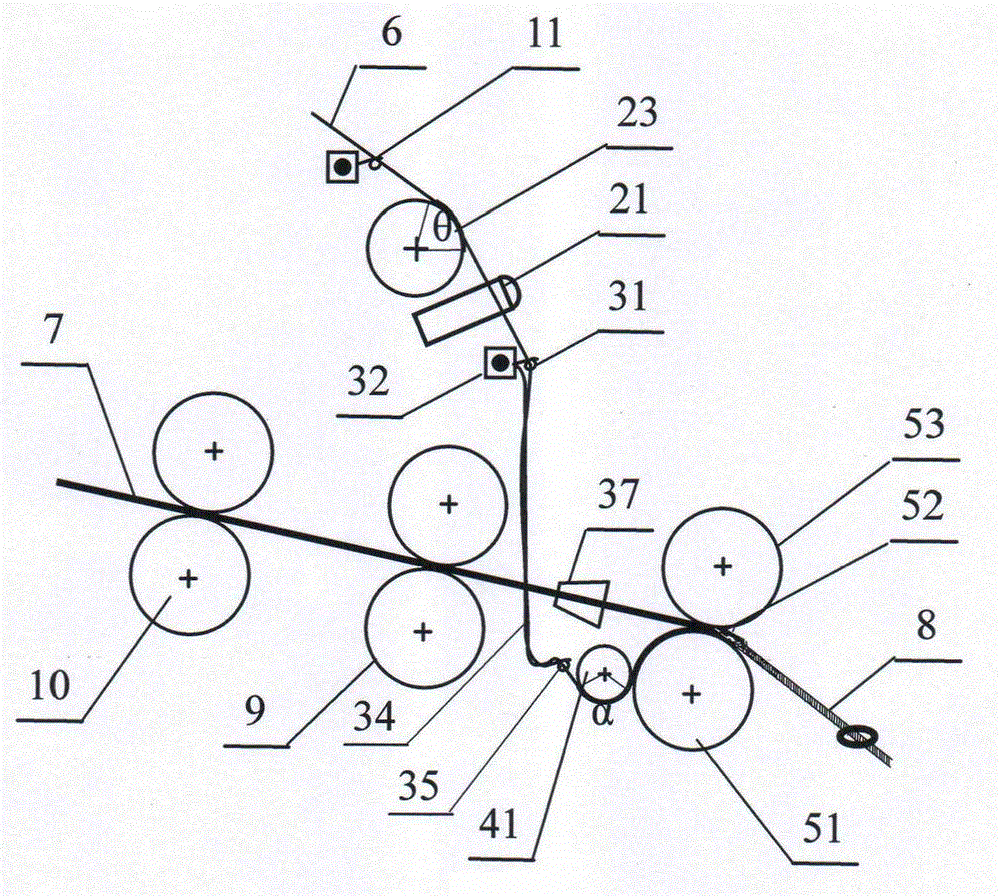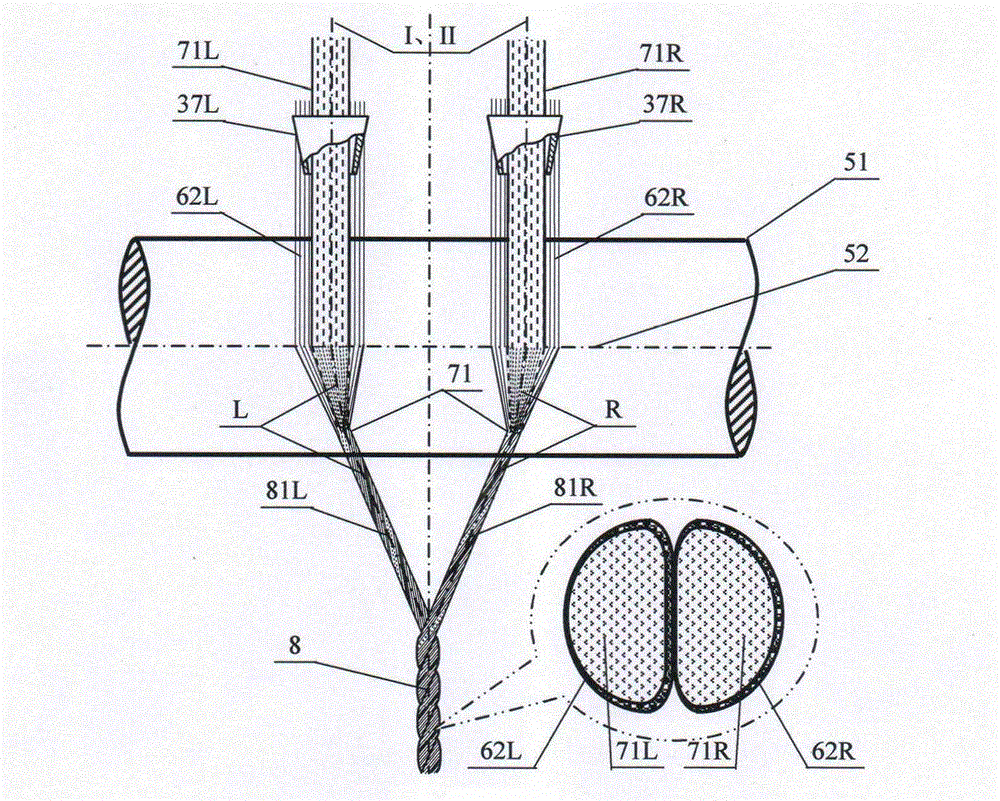Symmetrical beam-splitting double bottom support 2x2 axis composite yarn, spinning method and application
A composite spinning and composite yarn technology, applied in the directions of yarn, textiles and papermaking, can solve the problems of poor fiber, unavailability of spinnability, etc., achieve high breaking strength and tear strength, practical mechanism, and spinnable count. high effect
- Summary
- Abstract
- Description
- Claims
- Application Information
AI Technical Summary
Problems solved by technology
Method used
Image
Examples
Embodiment 1
[0063] Embodiment 1: Recycled cotton (noil) and viscose filament net wrapped composite spinning
[0064] By adopting the method of the present invention for symmetrical beam splitting and spreading double bottom support 2×2 shafting composite spinning, the viscose filament bundle is split according to the above method and then the yarn is spread, and the bottom support net is wrapped with cotton fiber whiskers. After the sliver is composite spun at the nip of the front roller to form a smooth three-axis composite yarn, the specific process parameters are shown in the table below, and the spinning shape and structure of spinning the composite yarn are as follows image 3 shown. The yarn hairiness index, twist angle, breaking strength, breaking elongation and yarn fineness irregularity of the spun bright and clean composite yarn are listed in the table below. Among them, the spinning rate is very high, which means that there is very little loss of fiber such as flying flowers, ...
Embodiment 2
[0065] Example 2: Composite spinning of short wool and nylon net wrapped in net
[0066] By adopting the method of the present invention for symmetrical beam-separating and spreading double-supported 2×2 shafting compound spinning, the nylon filament bundle is split according to the above method and then the yarn is spread, and the net is wrapped with the net to wrap the short-haired fiber strips. Then compound spinning in the front roller nip to form a smooth three-axis composite yarn. The specific process parameters are shown in the table below. The spinning shape and structure of spinning the composite yarn are as follows Figure 4a shown. The yarn hairiness index, twist angle, breaking strength, breaking elongation and yarn fineness irregularity of the spun bright and clean composite yarn are listed in the table below. Among them, the spinning rate is very high, which means that there is very little loss of fiber such as flying flowers, shavings, and broken ends; Low, in...
Embodiment 3
[0067] Embodiment 3: composite spinning of kapok / polyester filament mesh bag
[0068] By adopting the method of the present invention for symmetrical beam-separating and spreading double-supported 2×2 shafting composite spinning, the polyester filament bundle is split according to the above method and then stretched, and the kapok fiber strands are wrapped in the net and then placed in the front Roller nip composite spinning forms a smooth three-axis composite yarn. The specific process parameters are shown in the table below. The spinning shape and structure of the composite yarn are as follows: Figure 5b shown. The yarn hairiness index, twist angle, breaking strength, breaking elongation and yarn fineness irregularity of the spun bright and clean composite yarn are listed in the table below. Among them, the spinning rate is very high, which means that there is very little loss of fiber such as flying flowers, shavings, and broken ends; Low, indicating good spinnability an...
PUM
 Login to View More
Login to View More Abstract
Description
Claims
Application Information
 Login to View More
Login to View More - R&D
- Intellectual Property
- Life Sciences
- Materials
- Tech Scout
- Unparalleled Data Quality
- Higher Quality Content
- 60% Fewer Hallucinations
Browse by: Latest US Patents, China's latest patents, Technical Efficacy Thesaurus, Application Domain, Technology Topic, Popular Technical Reports.
© 2025 PatSnap. All rights reserved.Legal|Privacy policy|Modern Slavery Act Transparency Statement|Sitemap|About US| Contact US: help@patsnap.com



